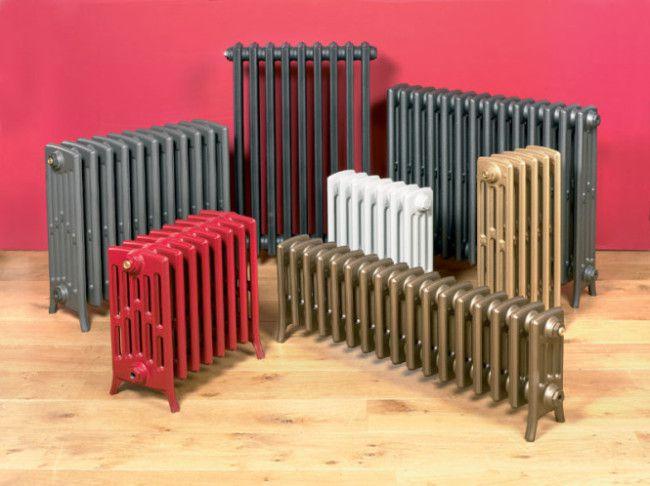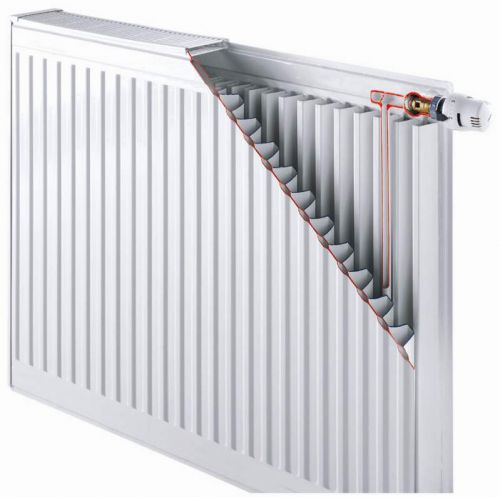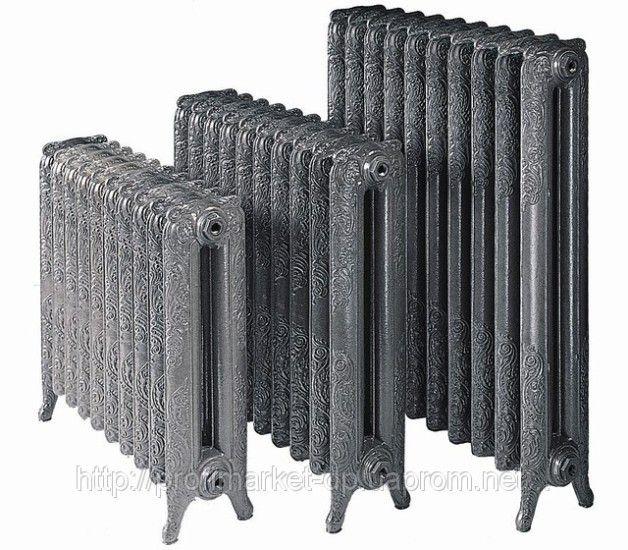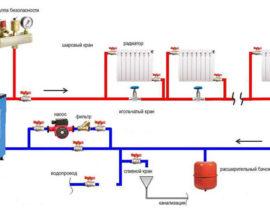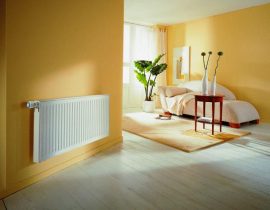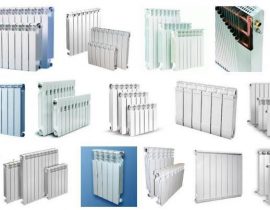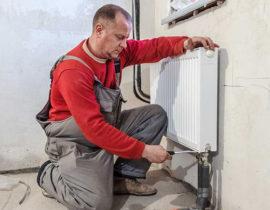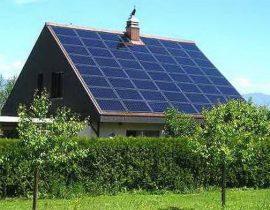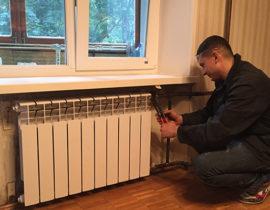Russia is a country with a rather harsh climate, and in order to feel comfortable in your own home in winter, you need to correctly design and install a heating system. In addition to the heater, which supplies hot coolant to the heating system, batteries or heating radiators also play an important role in creating a good microclimate in the home. This statement is true not only for detached houses or cottages, but also for apartments in apartment buildings. A good heating radiator can significantly increase the efficiency of the main heating system. So what are heating batteries, which ones are better?
Content
Features of batteries that everyone needs to know
Before proceeding with the design of a heating system and the selection of heating batteries, it is necessary to find out their main technical characteristics and installation methods. After all, it may happen that even a battery of excellent quality, if installed in a “bad” place, will significantly reduce its efficiency. The figure below clearly shows how the heat transfer of the batteries decreases depending on their installation in one or another corner of your house.
It is also worth knowing that from 90 to 125 watts of battery power is consumed for high-quality heating of 1 square meter of a dwelling. These are standard indicators for a room with one window, one door, having a ceiling height of no more than three meters and at a coolant temperature of 70 degrees.
When one of the parameters is changed, the heat loss of the room also changes, and the battery power required for its high-quality heating also changes accordingly. So, if the ceiling height in your home exceeds three meters, then the required power of the heating radiator must be increased by the same amount (for example, with a ceiling of 4.5 meters - one and a half times). Conversely, when effective thermal insulation is established, the required battery power decreases. Thus, qualitatively insulated windows with multi-chamber double-glazed windows significantly reduce the heat loss of the room. Lower power is required to heat the room, the outer wall of which is protected by a glazed loggia.
The coolant temperature also plays a critical role. Unfortunately, in our apartment buildings, it often falls short of the standard. If it drops by only 10 degrees, then you will need heating batteries with a power higher by 15 percent, and when the temperature of the coolant drops to 50 degrees, the power of the radiators must be increased by one and a half times.
Also, when connecting to main heating, when choosing the required number of radiators, you also need to know the water distribution system in the house. The fact is that hot water in the heating system can be in one room of direct flow (that is, powered from the main pipe), and in the other - reverse flow (that is, returning to the pipe).When connecting radiators to return pipes, it is necessary to provide for an increase in their power by 10 percent of the nominal.
But it is also not worth it to increase the number of sections with excessive enthusiasm. Heating radiators with more than 10 sections, it simply does not make sense to install, since hot water will cool down significantly until it reaches the last sections.
Comparison of heating radiators of different types
Currently, there are a large number of models of heating radiators on the market. But all of them are divided into several large groups:
First of all, heating radiators differ in the material of their manufacture. It is from the metal that was used to create the battery, from its thermal conductivity, that the main characteristics of heating devices depend.
Panel steel radiators
Steel is a very durable material and therefore steel radiators are highly resistant to pressure. So, panel-type steel radiators can withstand a pressure of 9 atmospheres, and in places of pressure testing up to 13 atmospheres.
As a rule, such thermal devices are used both in the construction of individual houses and in multi-apartment construction.
Such batteries are a steel sheet on which ribs are formed by stamping, inside which a coolant flow passes. In addition, such pressed steel plates can have additionally welded ribs, which, on the one hand, increase the rigidity of the structure, and, on the other hand, serve as additional sources of heating.
Mild steel is usually chosen as the material of manufacture. It has good corrosion resistance and has a long service life.For additional protection, the surface of such radiators is covered with powder enamel.
The best cast iron batteries
Such heating devices are installed in almost all Soviet-built buildings and are even sung in many films. It is worth noting that many cast-iron batteries installed in houses during the construction of communism still faithfully serve the children and grandchildren of their first owners.
Cast iron is great for making heating radiators. It shows excellent thermal conductivity, and the high mass of metal in such batteries allows heat to be accumulated. Cast iron is quite resistant to the aggressive environment of water-coolant in the main heat supply lines. It passes over its surface a large amount of water with very destructive additives, but nevertheless does not collapse for several decades.
The form of cast-iron radiators - the well-known "accordion" is great for distributing heat in the room. It divides the radiated heat into radial flow (which takes up about 70 percent of the total volume) and convection flow, which accounts for 30 percent.
By installing cast-iron radiators, you can forget about replacing heating appliances for about 50 years. Currently, these classic batteries are experiencing a kind of renaissance. Modern manufacturing technologies allow them to rightfully be called leaders in the price-quality ratio.
How good are aluminum heatsinks?
Aluminum radiators are the "youngest" representatives of the family of household heating appliances. They entered our lives just a few years ago and are already rightfully enjoying great popularity among consumers.Such batteries look very attractive from an aesthetic point of view and are distinguished by excellent heat dissipation.
Sections for aluminum batteries are made by casting and extrusion. Each section is equipped with a collector, the task of which is to connect the supply and output channels of the coolant. In the manufacture of sections of aluminum batteries, they are given a specially calculated shape in order to maximize heat transfer during the passage of the coolant. The front part of such panels has ribs, and windows for air exhaust are formed in the upper part.
For indoor installation, you can choose sections of aluminum radiators in the right quantity, depending on the tasks. The industry also produces aluminum sections of various heights, so you can solve any architectural problem with them.
However, aluminum, despite its widespread use in various devices, can be destroyed under the influence of an aggressive coolant. This process is especially active at the joints with other equipment that has copper in its composition. There is a so-called electrochemical corrosion. To prevent damage, a thin layer of a special alloy is poured inside the cavities of the aluminum sections.
Bimetallic batteries, are they as perfect as they say?
Bimetallic radiators represent the pinnacle of scientific achievements in this field. They combine all the advantages of classic solutions and are practically devoid of their shortcomings. The design of such radiators is very durable, since they are based on channels for the passage of coolant made of steel.Aluminum fins are placed on top of the pipes, thereby preventing the contact of delicate aluminum with the aggressive medium of the coolant.
Between themselves, the sections of bimetallic radiators are fixed with steel nipples, which allows them to withstand high water pressure. Radiators of this type can operate for a long time and trouble-free under high load and successfully withstand water hammer. Such devices show a normal operating pressure of 35 atmospheres, and the indicator during pressure testing reaches 50 atmospheres. Inside the bimetallic radiator at the same time contains more coolant than in the classic one, which allows them to heat the premises more efficiently.
Such devices are successfully used in high-rise buildings with high pressure water supply systems. From above, bimetallic radiators are covered with powder enamel, which does not lose its aesthetic properties even at a passing water temperature of 110 degrees.
Video: Tips for choosing heating radiators

